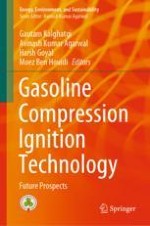2022 | OriginalPaper | Chapter
8. Injection Strategies and Auto-Ignition Features of Gasoline and Diesel Type Fuels for Advanced CI Engine
Authors : Abdullah S. AlRamadan, Gustav Nyrenstedt
Published in: Gasoline Compression Ignition Technology
Publisher: Springer Nature Singapore
Activate our intelligent search to find suitable subject content or patents.
Select sections of text to find matching patents with Artificial Intelligence. powered by
Select sections of text to find additional relevant content using AI-assisted search. powered by
